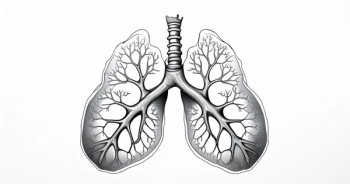
Improvements in the Treatment of ALK+ NSCLC
Robert C. Doebele, MD, PhD:As we think about treatment forALK-positive nonsmall cell lung cancer, we’ve really seen a shift in how we treat these patients. Years ago, we were using crizotinib as first-line therapy, and then 1 of the next-generation inhibitors as second-line therapy. That’s really now been supplanted by alectinib or brigatinib as the first-line ALK inhibitor option.
As we mentioned, brigatinib can be used post alectinib if your patients have been receiving alectinib in the first-line setting. There’s now an FDA approval for lorlatinib as treatment post alectinib. I think where we’re going next is thinking about combination therapies for patients.
There is still at least 1 other ALK inhibitor in development: ensartinib. It’s not clear where that would fit into the treatment paradigm, because it’s not clear that it has any usual properties compared with some of the other drugs that we discussed today.
I do think that testing following treatment is going to help us better understand where we need to go next, in terms of therapeutic options for our patients. I think we’ve become very good at treating resistance mutations, but we’ve not been very successful in coming up with treatment paradigms for patients who don’t have resistance mutations and who have bypass signaling.
Transcript edited for clarity.
Case: A 53-Year-Old Woman WithALK-Rearranged NSCLC
- A 53-year-old woman presented with dyspnea, persistent cough with bloody sputum, and intermittent pain in right side of her chest
- Relevant PMH:
- Nonsmoker, had childhood exposure to second-hand smoke
- No history or presence of pneumonia or bronchitis
- No history of diabetes, cardiovascular disease, or renal disease
- PE: lungs, clear; no palpable masses or visible lesions; patient is of average height and weight, appears physically fit
- Diagnostic workup:
- Chest X-Ray: revealed multiple small solid lesions in right lung
- CT with contrast chest/abdomen/pelvis: several hyperattenuated tumors in right lung
- Biopsy confirmed lung adenocarcinoma
- Molecular testing:
- Genetic testing;EGFR, BRAF, RET,KRAS, HER2wild-type,ROS1FISH
- IHC;ALK-rearrangement
- PD-L1 TPS; 20%
- Brain MRI: revealed extensive CNS involvement
- Treatment:
- Started on alectinib; achieved partial response
- Developed fatigue, grade 1 constipation, and nausea; continued treatment
- Imaging at 12 months showed disease progression
- Tumor testing of a lung lesions demonstrated MET FISH+
- She was started on crizotinib
- Imaging at 3 and 6 months showed a partial response
- Developed grade 2 diarrhea and visual disturbance; continued treatment
- Imaging at 10 months showed progression in the CNS lesions and the lung
- Repeat biopsy of the lung lesions and genotyping showed ALK L1196M mutation
- She was started on brigatinib at 90 mg once daily; she tolerated therapy well and after 1 week, dose was increased to 180 mg once daily
- Achieved partial response, including in CNS metastases
- Had fatigue, but was able to resume some exercise
- Remains on treatment 16 months later






































